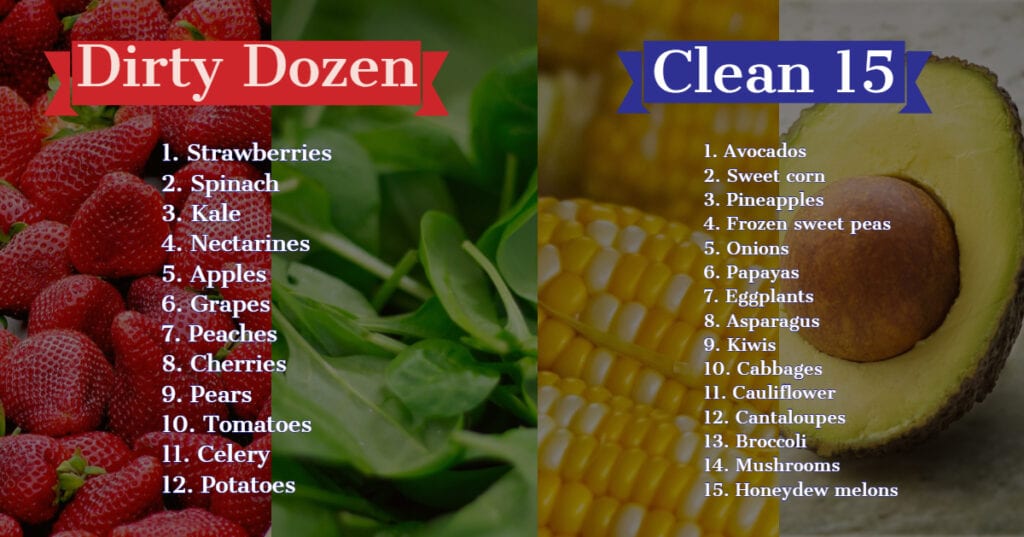
Are you familiar with the Dirty Dozen and Clean 15 lists???
Every year the Environmental Working Group (EWG) produces the lists as part of their Shopper’s Guide to Pesticides in Produce.
The United States Department of Agriculture (USDA) tests thousands of samples of produce sold in America. And the EWG analyzes the list to determine which produce has the most pesticide residues (the Dirty Dozen) and which has the least pesticide residues (the Clean Fifteen.)
If you’re familiar with the Guide to Pesticide in Produce, you’ll recognize a lot of familiar faces on the lists this year. Although there are a few surprising newcomers!
The USDA found evidence of 225 different pesticides and pesticide breakdown products. What’s more, nearly 70% of the tested samples were contaminated by pesticide residues!
But why should you be aware of pesticide residues on produce? Well, pesticides are bad news for your bones and have been linked to cancer, because many are pro-oxidant, which means they produce free radicals in your body. And free radicals can trigger low-grade, chronic inflammation which causes bone loss! Plus, pesticides have been linked to fertility issues in both men and women.
Buying organic produce whenever you can. But depending on the time of year or where you live, organic options aren’t always available. The Clean Fifteen and Dirty Dozen lists make it easier for you to decide which conventionally grown foods are safe and healthy to eat, and which are worth spending a little extra on to go organic.
So even though it’s still important to wash produce, especially if it’s conventional, washing does not remove all traces of pesticide, and the items included in the Dirty Dozen are the ones with the most pesticide residue after washing and peeling.
The best way to wash it is in water with a little vinegar and baking soda.
